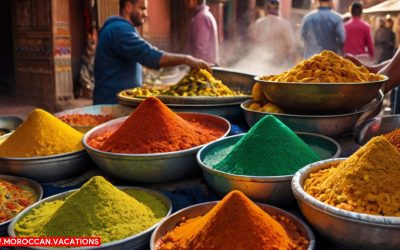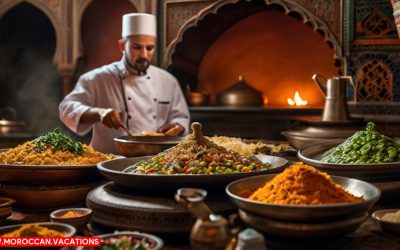Origins of Moroccan Street Food
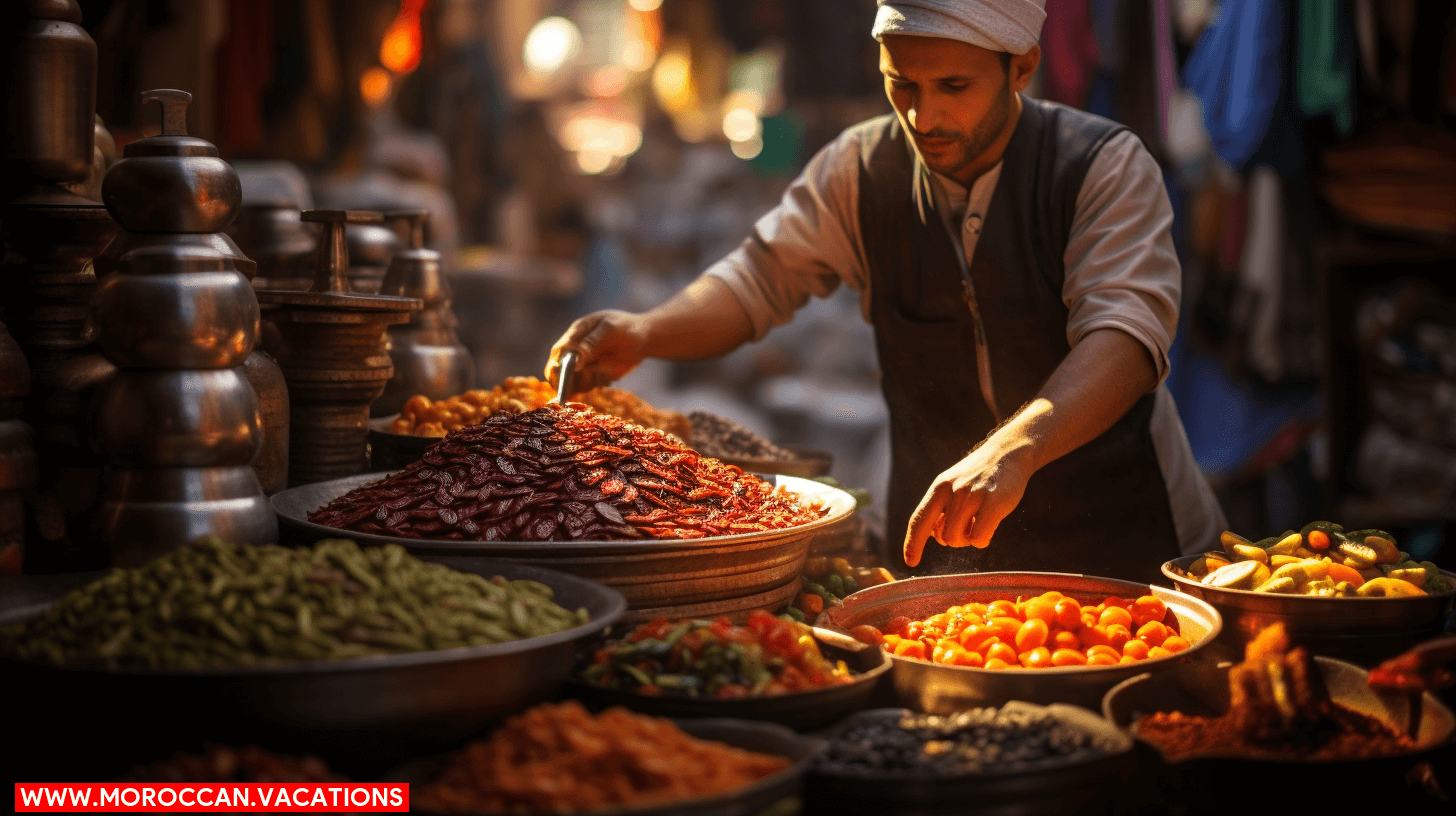

Step into the vibrant streets of Morocco and embark on a culinary journey like no other. Discover the rich tapestry of flavors and spices that have shaped the evolution of Moroccan street food, from its humble beginnings to its modern twists. Immerse yourself in the enticing aromas and savor the mouthwatering delights that reflect the fusion of traditions and influences from around the world. Indulge in the freedom of choice as you explore the ever-changing landscape of Moroccan street food, where every bite tells a story.
To understand the origins of Moroccan street food, you need to delve into the rich cultural tapestry of this vibrant North African country. Moroccan street food has been shaped by a variety of culinary influences and has become an integral part of the country’s street food culture.
Morocco’s geographical location has played a significant role in the development of its street food. Situated at the crossroads of Africa, Europe, and the Middle East, Morocco has been influenced by a diverse range of cultures and cuisines. The country’s street food culture reflects this diversity, with flavors and techniques borrowed from Berber, Arab, Mediterranean, and French cuisines.
One key influence on Moroccan street food is the Berber culinary tradition. The Berbers, the indigenous people of North Africa, have a long history of using local ingredients and spices in their cooking. This tradition is still evident in Moroccan street food today, with dishes such as tagines, couscous, and harira soup being staples of street vendors’ offerings.
Another culinary influence on Moroccan street food is the Arab cuisine, which was introduced to the region during the Arab conquest of Morocco in the 7th century. Arab cooking techniques, such as grilling and frying, as well as ingredients like dates, almonds, and saffron, have made their way into Moroccan street food.
Morocco’s colonial history has also left its mark on the country’s street food culture. The French, who ruled Morocco from 1912 to 1956, introduced new ingredients and cooking methods to the region. French-inspired pastries, such as mille-feuille and macarons, can now be found alongside traditional Moroccan street food.
Traditional Moroccan Street Food Recipes
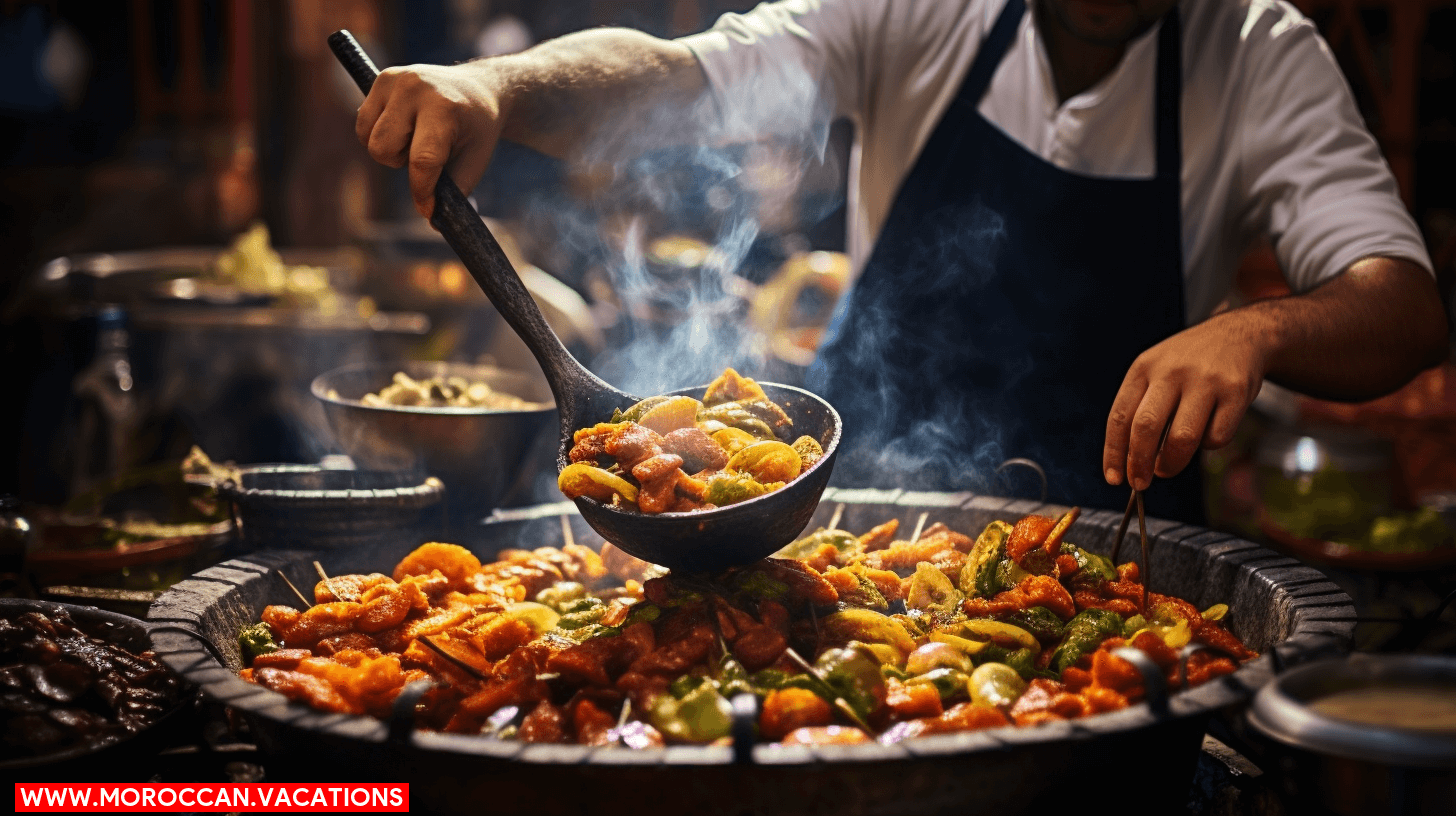

Explore the delectable world of traditional Moroccan street food recipes. From the bustling streets of Marrakech to the coastal towns of Essaouira, Morocco is known for its vibrant street food culture. These recipes have been passed down through generations, each one crafted with care and precision. Traditional Moroccan street food techniques involve a combination of aromatic spices, fresh ingredients, and a hint of culinary magic.
To give you a taste of what awaits, here are some popular Moroccan street food vendors and their signature dishes:
| Vendor | Signature Dish |
| Jemaa el-Fnaa | Moroccan Lamb Tagine |
| Djemaa el-Fnaa | B’stilla (Savory Pastry) |
| Essaouira | Grilled Sardines |
| Tangier | Moroccan Mint Tea |
| Fes | Chicken Bastilla |
Jemaa el-Fnaa, located in Marrakesh, is renowned for its tantalizing Moroccan Lamb Tagine. The succulent meat is slow-cooked with fragrant spices, creating a dish that is bursting with flavor. Djemaa el-Fnaa, also in Marrakesh, is famous for its B’stilla, a savory pastry filled with tender chicken, almonds, and aromatic spices.
In the coastal town of Essaouira, you can savor the freshness of Grilled Sardines, a local specialty. The fish is marinated in a blend of herbs and spices, then cooked over an open flame to perfection. Tangier, on the other hand, is known for its refreshing Moroccan Mint Tea, a fragrant and soothing beverage that is enjoyed throughout the day.
Lastly, Fes is home to the Chicken Bastilla, a delicate pastry filled with a succulent blend of spiced chicken, almonds, and eggs. Its flaky layers and savory filling make it a true Moroccan street food delight.
These traditional Moroccan street food recipes are a testament to the rich culinary heritage of Morocco. Each dish tells a story, providing a glimpse into the vibrant street food culture that has evolved over centuries. So, take a culinary journey through the streets of Morocco and indulge in these mouthwatering delights.
Influences From Other Cultures
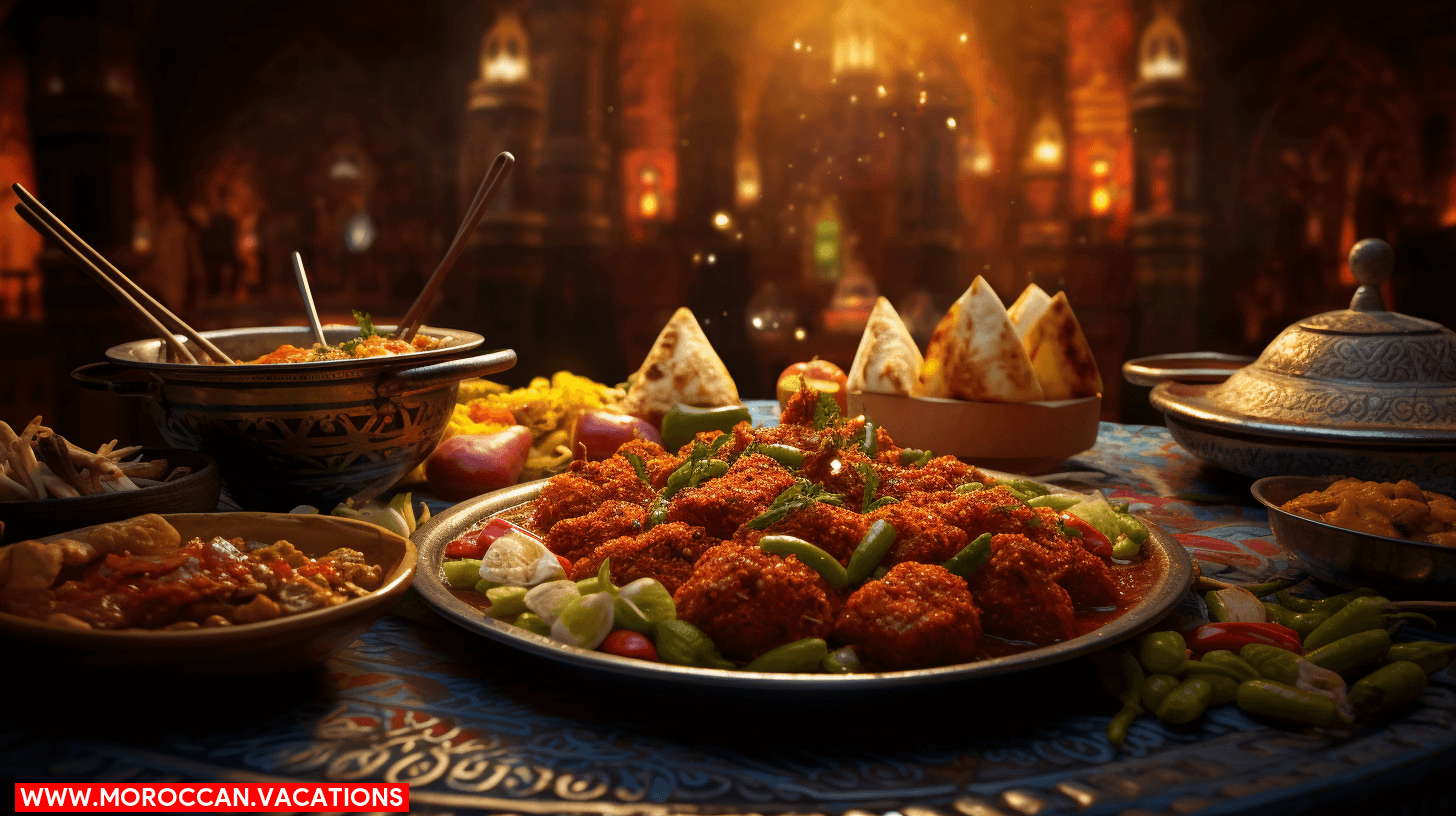

As you delve into the evolution of Moroccan street food from past to present, you will discover the fascinating influences that other cultures have had on this vibrant culinary tradition. Moroccan street food is a testament to the cultural fusion that occurs through globalization influences. Here are some key influences from other cultures that have shaped the Moroccan street food scene:
– Berber Influence: The indigenous Berber culture has greatly influenced Moroccan street food, with dishes like tagine and couscous being staples of Berber cuisine. These dishes have become synonymous with Moroccan street food.
– Arab Influence: Arab traders brought new ingredients and spices to Morocco, such as saffron and cinnamon, which are now commonly used in Moroccan street food. The Arab influence can also be seen in dishes like harira, a hearty soup often enjoyed during Ramadan.
– Moorish Influence: The Moors, who ruled over parts of Spain and Portugal, brought their culinary traditions to Morocco. This influence can be seen in dishes like pastilla, a savory pastry filled with meat and spices, which has similarities to Spanish empanadas.
– French Influence: During the French colonial period, French culinary techniques and ingredients were introduced to Morocco. French pastries, like croissants and pain au chocolat, are now popular street food items in Morocco.
– Jewish Influence: The Jewish community in Morocco has also contributed to the country’s street food scene. Dishes like matbucha, a spicy tomato and pepper salad, and briouats, stuffed pastries, reflect the Jewish influence on Moroccan cuisine.
These influences from other cultures have enriched Moroccan street food, making it a vibrant and diverse culinary tradition that continues to evolve with the changing times.
Street Food in Moroccan Markets
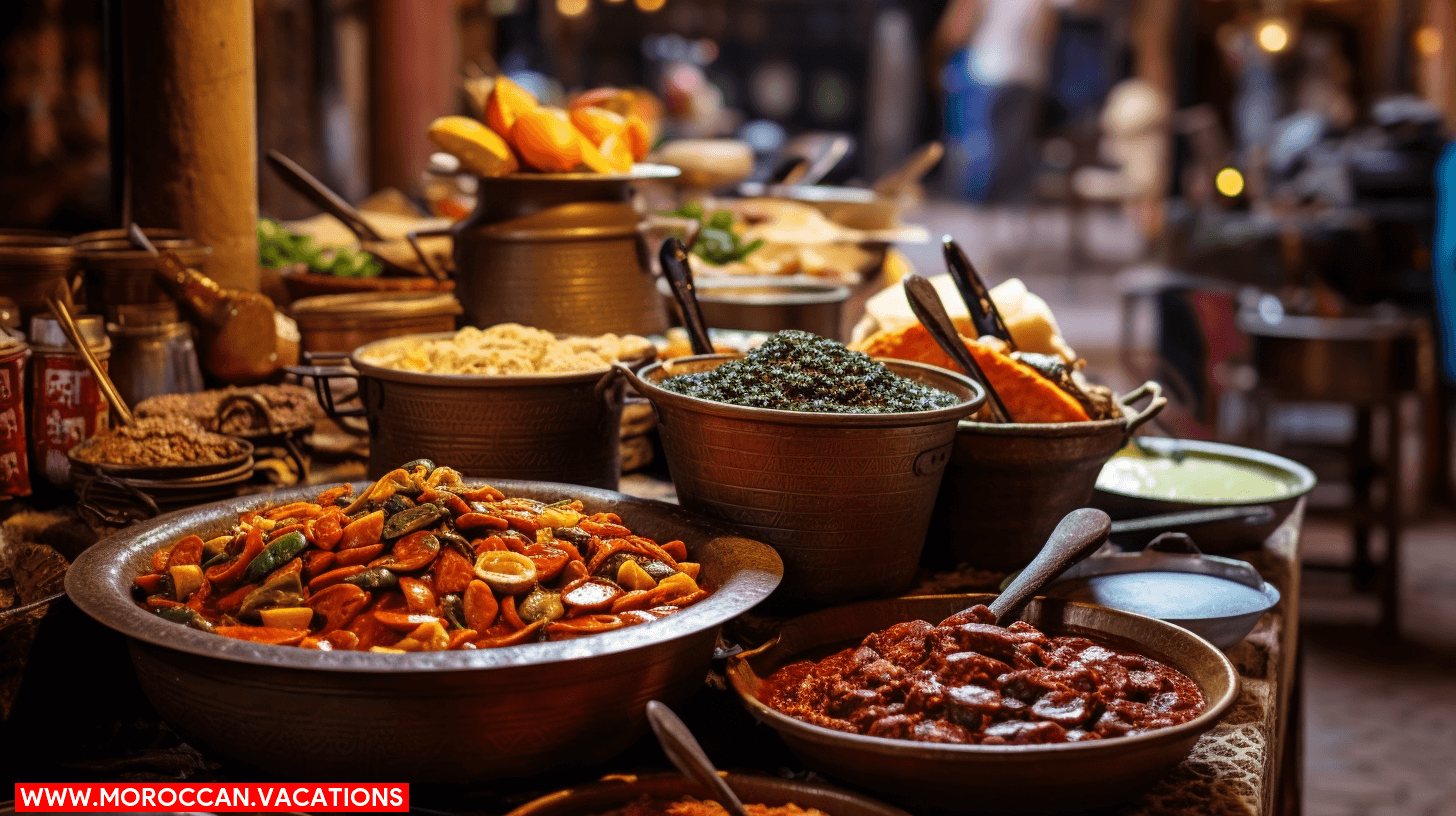

In the Moroccan markets, you can find a wide variety of delectable street food options that showcase the rich culinary heritage of the country. Moroccan street food has gained immense popularity over the years, attracting locals and tourists alike. The bustling markets are filled with the enticing aroma of spices and the sizzling sounds of street food being cooked on open grills.
One of the highlights of Moroccan street food is the presence of street food vendors in the markets. These vendors set up their stalls early in the morning, preparing and cooking their specialties throughout the day. From savory snacks like bissara (a traditional Moroccan soup made from fava beans) and msemmen (a flaky Moroccan pancake) to sweet treats like chebakia (a sesame and honey cookie) and sellou (a traditional Moroccan sweet made from almonds, sesame seeds, and honey), the variety is endless.
The popularity of street food in Moroccan markets can be attributed to several factors. Firstly, the affordability of street food makes it accessible to people from all walks of life. Additionally, the vibrant and lively atmosphere of the markets adds to the overall experience of enjoying street food. Lastly, the authenticity and unique flavors of Moroccan street food make it a must-try for anyone visiting the country.
Modern Twists on Moroccan Street Food
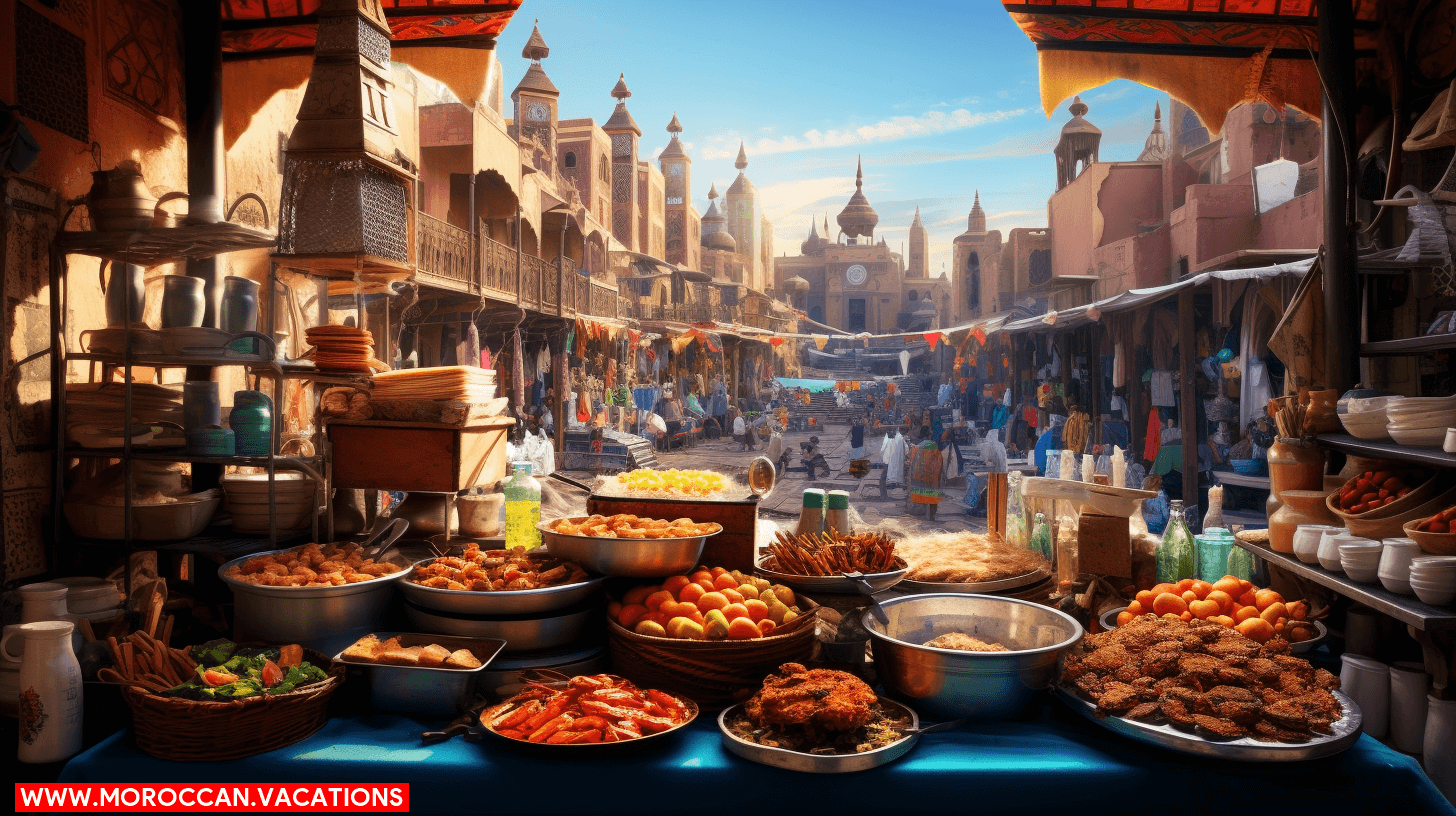

Try some of the innovative takes on Moroccan street food that have emerged in recent years. Moroccan cuisine has always been influenced by various cultures throughout history, and street food is no exception. Today, you can find a fusion of traditional Moroccan flavors with modern twists and global influences. Here are some examples:
– Moroccan Tacos: Imagine a crispy tortilla filled with tender Moroccan-spiced lamb, topped with tangy tomato salsa and creamy harissa mayo. This delightful combination brings together the best of Moroccan and Mexican cuisines in one handheld treat.
– Shawarma Wraps: Inspired by Middle Eastern street food, these wraps feature succulent slices of marinated chicken or lamb, grilled to perfection and wrapped in a soft flatbread. The addition of Moroccan spices and condiments like preserved lemons and chermoula sauce adds a unique twist to this classic dish.
– Moroccan Pizza: A fusion of Italian and Moroccan flavors, this pizza showcases a thin and crispy crust topped with traditional Moroccan ingredients such as spicy merguez sausage, salty olives, and fragrant spices like cumin and paprika.
– Moroccan Burgers: These juicy burgers are made with a blend of ground beef and lamb, seasoned with Moroccan spices like ras el hanout. Topped with caramelized onions, melted cheese, and a dollop of harissa mayo, these burgers are a flavorful twist on a classic American favorite.
– Moroccan Sushi Rolls: This innovative creation combines the art of sushi-making with Moroccan flavors. Sushi rice is rolled with ingredients like marinated fish, avocado, and pickled vegetables, then topped with a drizzle of spicy harissa sauce or a sprinkle of toasted sesame seeds.
These modern twists on Moroccan street food showcase the creativity and food innovation that have emerged in recent years. By incorporating global influences and experimenting with traditional flavors, Moroccan chefs are redefining the street food scene and offering new and exciting culinary experiences. So, embrace your freedom to explore and indulge in these delicious creations!
The Rise of Fusion Street Food
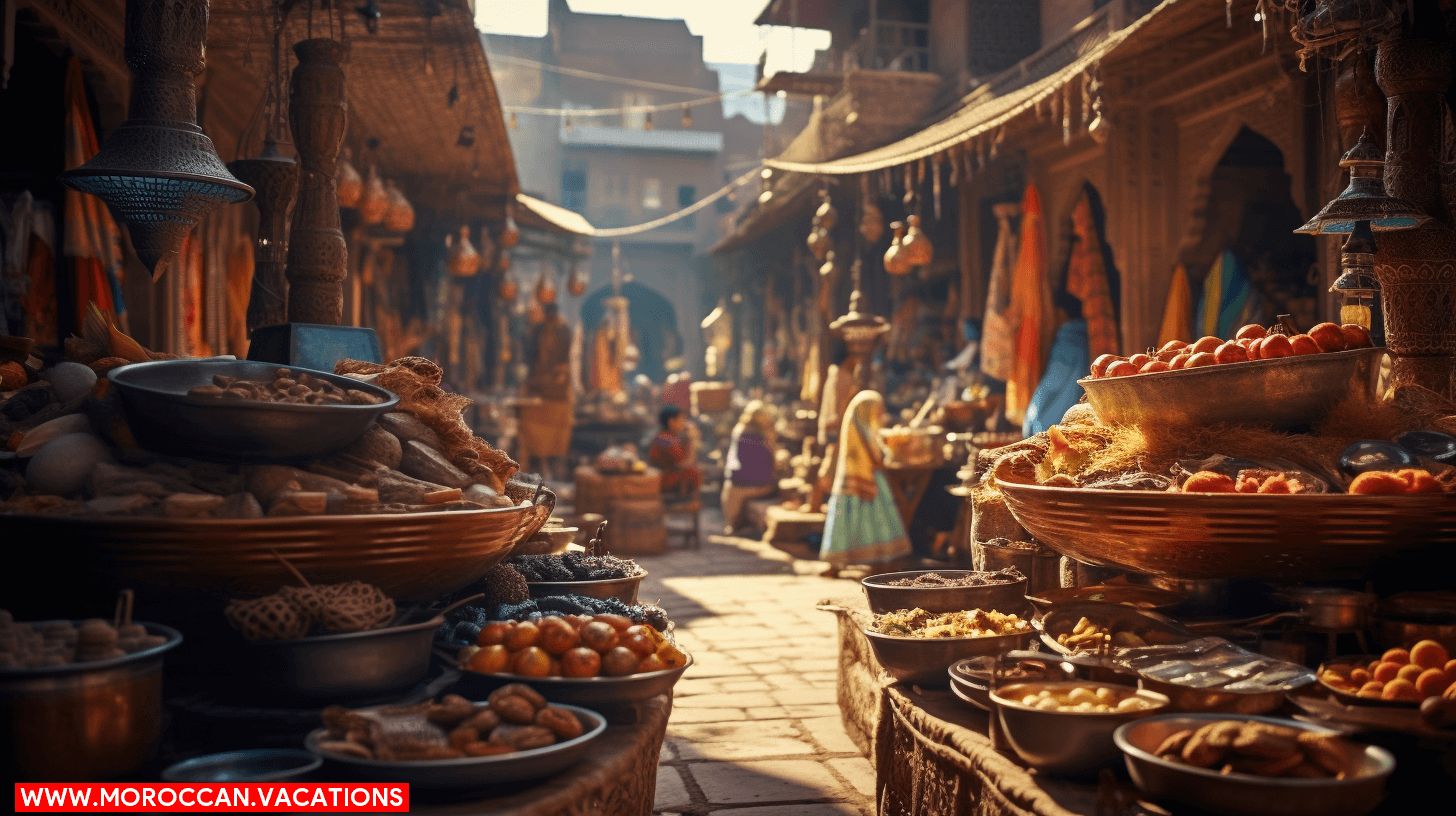

Explore the exciting trend of fusion street food, where Moroccan cuisine blends harmoniously with flavors from around the world. In recent years, Moroccan street food has undergone a transformation, thanks to the rise of the food truck phenomenon and the influence of global culinary trends.
Food trucks have become a popular platform for chefs to experiment with different cuisines and create unique fusion dishes. Moroccan street food, known for its bold flavors and aromatic spices, has embraced this trend by incorporating elements from various international cuisines. For example, you can now find Moroccan-inspired tacos with harissa-infused fillings or Moroccan-style burgers topped with tangy chermoula sauce.
This fusion of Moroccan cuisine with global flavors has opened up a whole new world of possibilities for adventurous food lovers. It allows them to experience the rich flavors of Moroccan street food in innovative and unexpected ways. From Moroccan-inspired sushi rolls to Moroccan-style pizza, the fusion street food scene in Morocco is constantly evolving and pushing boundaries.
The rise of fusion street food reflects the changing tastes and preferences of consumers who are seeking new and exciting culinary experiences. It also showcases the creativity and skill of Moroccan chefs who are able to adapt traditional recipes and techniques to create dishes that cater to a modern, global audience. So, next time you’re in Morocco, be sure to explore the vibrant world of fusion street food and indulge in the delicious blend of Moroccan and international flavors.
Health and Sustainability in Moroccan Street Food
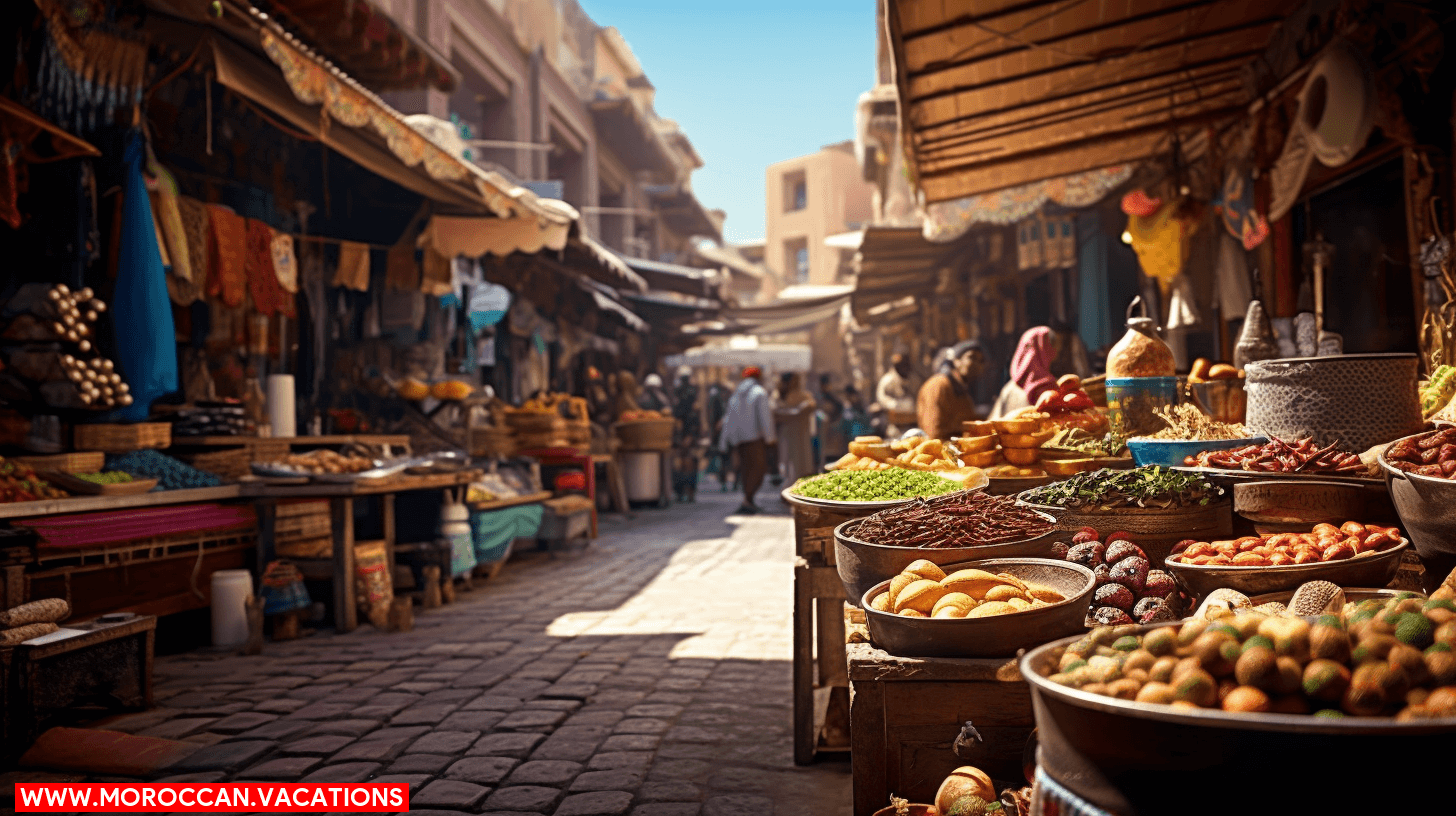

Looking for a healthier and more sustainable option when enjoying Moroccan street food? You’ll be pleased to know that there are several ways in which Moroccan street food is embracing health and sustainability. Here are some key aspects to consider:
– Sourcing Ingredients: Moroccan street food vendors are increasingly focusing on sourcing ingredients locally, which not only supports local farmers but also ensures that the produce is fresh and of high quality. This emphasis on local sourcing helps to reduce the carbon footprint associated with transporting ingredients over long distances.
– Cultural Significance: Moroccan street food has a rich cultural heritage, and many vendors are now striving to preserve traditional recipes and cooking techniques. By using authentic ingredients and traditional cooking methods, they are able to offer a more authentic and culturally significant dining experience.
– Healthier Options: In response to growing health concerns, Moroccan street food vendors are incorporating healthier options into their menus. You can now find a variety of grilled meats and vegetables, as well as fresh salads and fruit juices, which provide a nutritious alternative to fried and heavy dishes.
– Reducing Waste: Street food vendors are also taking steps to reduce waste by using eco-friendly packaging and implementing recycling programs. This commitment to sustainability helps to minimize the environmental impact of street food consumption.
-Education and Awareness: Many street food vendors are actively educating their customers about the health benefits of their dishes and the sustainable practices they follow. This increased awareness encourages consumers to make more informed choices and supports the overall goal of a healthier and more sustainable street food culture.
The Future of Moroccan Street Food
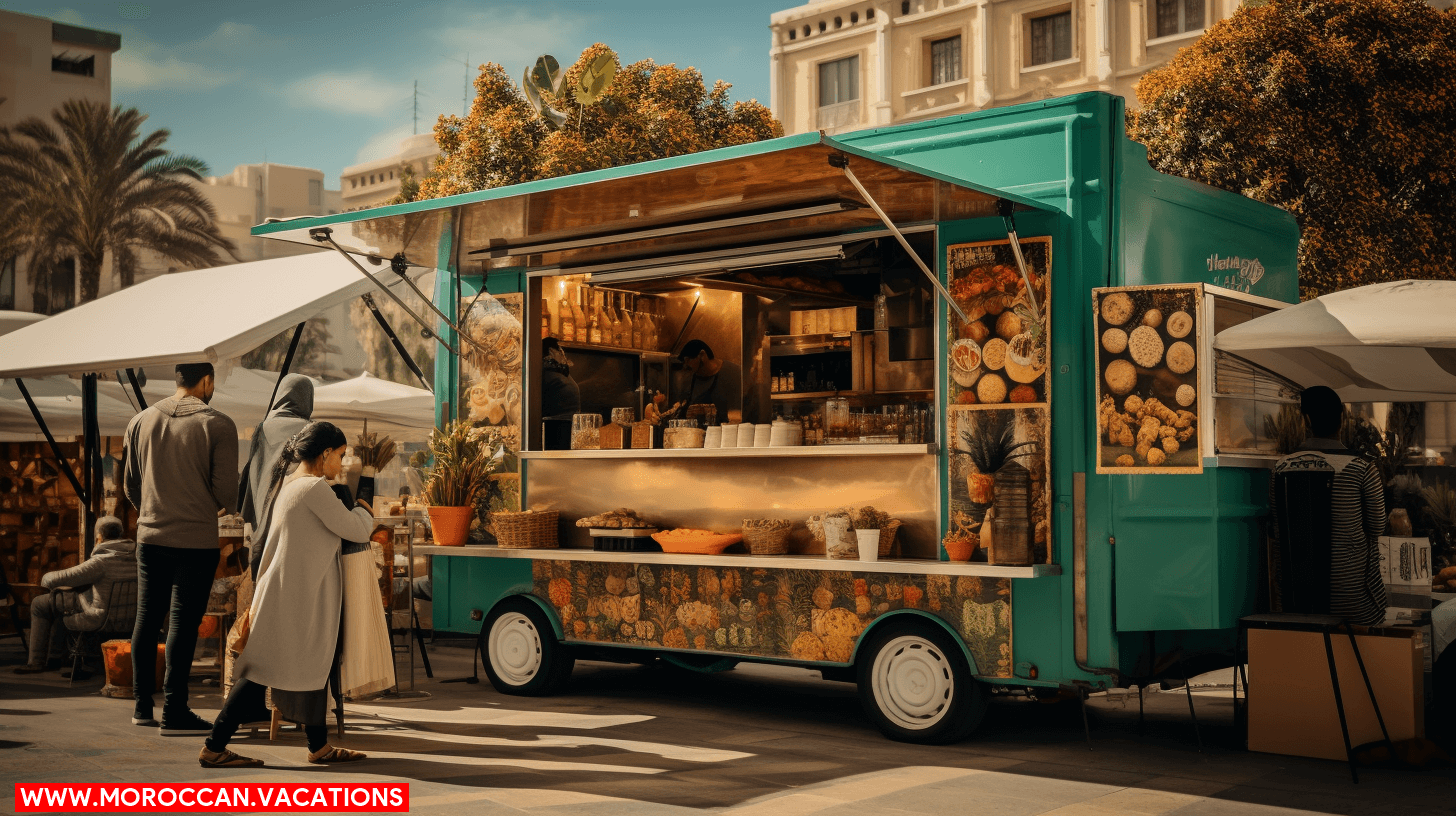

As you consider the future of Moroccan street food, envision a culinary landscape that embraces innovation and caters to evolving consumer preferences. The future trends in Moroccan street food are likely to be driven by technological advancements, revolutionizing the way food is prepared, served, and consumed.
One of the future trends in Moroccan street food is the incorporation of technology into the cooking process. With the rise of automation and robotics, it is possible to imagine food stalls equipped with high-tech cooking devices that can ensure consistency and quality in every dish. This would not only reduce human error but also increase efficiency, allowing vendors to cater to a larger customer base.
Another future trend is the integration of digital platforms and mobile applications into the Moroccan street food scene. These platforms can provide consumers with real-time information about the location, menu, and reviews of various street food vendors. This would enable customers to make informed choices and easily discover new and unique food options.
Furthermore, technological advancements can also enhance the overall dining experience. For instance, virtual reality (VR) and augmented reality (AR) technologies can be used to create immersive dining experiences, where customers can virtually explore the origins and preparation of their food.


Samira Amrani
The passionate author behind Moroccan Vacations, sharing her expertise and love for Moroccan culture, cuisine, and travel experiences to inspire wanderlust in every reader.
Related Articles
Vegetarian and Vegan Options in Marrakesh Street Food
Traditional Moroccan Vegetarian Tagines Are you tired of feeling limited when it comes to finding vegetarian and vegan options in Marrakesh's bustling street food scene? Well, we've got some good news for you! Get ready to embark on a culinary adventure filled with...
Street Food Safety Tips for Enjoying Marrakesh's Local Cuisine
Research Local Food Regulations Did you know that Marrakesh is home to a vibrant street food scene, offering a rich variety of local cuisine? To fully enjoy these culinary delights while ensuring your health and safety, it's important to follow a few simple tips. In...
The Influence of Arab Cuisine on Moroccan Culinary Traditions
Historical Background of Arab Influence Imagine yourself transported to the vibrant streets of Morocco, where the tantalizing aroma of spices fills the air and the sizzle of food cooking on open flames entices your senses. In this culinary paradise, the influence of...

